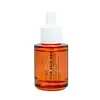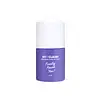What's inside
What's inside
 Key Ingredients
Key Ingredients

 Benefits
Benefits

 Concerns
Concerns

 Ingredients Side-by-side
Ingredients Side-by-side

Water
Skin ConditioningPropylene Glycol
HumectantPotassium Azeloyl Diglycinate
Skin ConditioningSaccharomyces/Xylinum/Black Tea Ferment
Skin ConditioningNiacinamide
SmoothingGlycerin
HumectantPhenoxyethanol
PreservativeXanthan Gum
EmulsifyingAllantoin
Skin ConditioningChlorphenesin
AntimicrobialTetrasodium EDTA
Sodium Bisulfite
AntioxidantHydroxyethylcellulose
Emulsion StabilisingBiosaccharide Gum-1
HumectantSodium Citrate
BufferingCitric Acid
BufferingCaprylyl Glycol
EmollientPotassium Sorbate
PreservativeSodium Hydroxide
BufferingWater, Propylene Glycol, Potassium Azeloyl Diglycinate, Saccharomyces/Xylinum/Black Tea Ferment, Niacinamide, Glycerin, Phenoxyethanol, Xanthan Gum, Allantoin, Chlorphenesin, Tetrasodium EDTA, Sodium Bisulfite, Hydroxyethylcellulose, Biosaccharide Gum-1, Sodium Citrate, Citric Acid, Caprylyl Glycol, Potassium Sorbate, Sodium Hydroxide
Water
Skin ConditioningCaprylic/Capric Triglyceride
MaskingGlycerin
HumectantButylene Glycol
HumectantDibutyl Adipate
EmollientSaccharide Isomerate
HumectantGlyceryl Stearate
EmollientParfum
MaskingKojic Acid
AntioxidantPEG-100 Stearate
Cysteamine Hcl
AntioxidantPEG-40 Hydrogenated Castor Oil
EmulsifyingLavandula Hybrida Herb Oil
PerfumingCetyl Alcohol
EmollientPEG-75 Stearate
Ceteareth-20
CleansingAllantoin
Skin ConditioningMorus Alba Bark Extract
Skin ConditioningPropylene Glycol
HumectantAloe Barbadensis Leaf Extract
EmollientGlycine Soja Seed Extract
Skin ConditioningCarbomer
Emulsion StabilisingPhenoxyethanol
PreservativeTriethanolamine
BufferingChlorphenesin
AntimicrobialPentaerythrityl Tetra-Di-T-Butyl Hydroxyhydrocinnamate
AntioxidantBHT
AntioxidantXanthan Gum
EmulsifyingCaprylyl Glycol
EmollientTocopheryl Acetate
AntioxidantCitric Acid
BufferingSodium Citrate
BufferingEthylhexylglycerin
Skin ConditioningWater, Caprylic/Capric Triglyceride, Glycerin, Butylene Glycol, Dibutyl Adipate, Saccharide Isomerate, Glyceryl Stearate, Parfum, Kojic Acid, PEG-100 Stearate, Cysteamine Hcl, PEG-40 Hydrogenated Castor Oil, Lavandula Hybrida Herb Oil, Cetyl Alcohol, PEG-75 Stearate, Ceteareth-20, Allantoin, Morus Alba Bark Extract, Propylene Glycol, Aloe Barbadensis Leaf Extract, Glycine Soja Seed Extract, Carbomer, Phenoxyethanol, Triethanolamine, Chlorphenesin, Pentaerythrityl Tetra-Di-T-Butyl Hydroxyhydrocinnamate, BHT, Xanthan Gum, Caprylyl Glycol, Tocopheryl Acetate, Citric Acid, Sodium Citrate, Ethylhexylglycerin
 Reviews
Reviews

Ingredients Explained
These ingredients are found in both products.
Ingredients higher up in an ingredient list are typically present in a larger amount.
Allantoin is a soothing ingredient known for its protective and moisturizingg properties. Because of this, it is often added to products with strong active ingredients.
Studies show higher concentrations of this ingredient can promote wound healing.
Though it can be derived from the comfrey plant, allantoin is produced synthetically for cosmetic products to ensure purity.
Learn more about AllantoinCaprylyl Glycol is a humectant and emollient, meaning it attracts and preserves moisture.
It is a common ingredient in many products, especially those designed to hydrate skin. The primary benefits are retaining moisture, skin softening, and promoting a healthy skin barrier.
Though Caprylyl Glycol is an alcohol derived from fatty acids, it is not the kind that can dry out skin.
This ingredient is also used as a preservative to extend the life of products. It has slight antimicrobial properties.
Learn more about Caprylyl GlycolChlorphenesin is a synthetic preservative. It helps protect a product against bacteria in order to extend shelf life. In most cases, Chlorphenesin is paired with other preservatives such as phenoxyethanol and caprylyl glycol.
Chlorphenesin is a biocide. This means it is able to help fight the microorganisms on our skin. It is also able to fight odor-releasing bacteria.
Chlorphenesin is soluble in both water and glycerin.
Studies show Chlorphenesin is easily absorbed by our skin. You should speak with a skincare professional if you have concerns about using Chlorphenesin.
Learn more about ChlorphenesinCitric Acid is an alpha hydroxy acid (AHA) naturally found in citrus fruits like oranges, lemons, and limes.
Like other AHAs, citric acid can exfoliate skin by breaking down the bonds that hold dead skin cells together. This helps reveal smoother and brighter skin underneath.
However, this exfoliating effect only happens at high concentrations (20%) which can be hard to find in cosmetic products.
Due to this, citric acid is usually included in small amounts as a pH adjuster. This helps keep products slightly more acidic and compatible with skin's natural pH.
In skincare formulas, citric acid can:
While it can provide some skin benefits, research shows lactic acid and glycolic acid are generally more effective and less irritating exfoliants.
Most citric acid used in skincare today is made by fermenting sugars (usually from molasses). This synthetic version is identical to the natural citrus form but easier to stabilize and use in formulations.
Read more about some other popular AHA's here:
Learn more about Citric AcidGlycerin is already naturally found in your skin. It helps moisturize and protect your skin.
A study from 2016 found glycerin to be more effective as a humectant than AHAs and hyaluronic acid.
As a humectant, it helps the skin stay hydrated by pulling moisture to your skin. The low molecular weight of glycerin allows it to pull moisture into the deeper layers of your skin.
Hydrated skin improves your skin barrier; Your skin barrier helps protect against irritants and bacteria.
Glycerin has also been found to have antimicrobial and antiviral properties. Due to these properties, glycerin is often used in wound and burn treatments.
In cosmetics, glycerin is usually derived from plants such as soybean or palm. However, it can also be sourced from animals, such as tallow or animal fat.
This ingredient is organic, colorless, odorless, and non-toxic.
Glycerin is the name for this ingredient in American English. British English uses Glycerol/Glycerine.
Learn more about GlycerinPhenoxyethanol is a preservative that has germicide, antimicrobial, and aromatic properties. Studies show that phenoxyethanol can prevent microbial growth. By itself, it has a scent that is similar to that of a rose.
It's often used in formulations along with Caprylyl Glycol to preserve the shelf life of products.
Propylene Glycol is an odorless, colorless liquid. As a humectant, it helps skin retain moisture. It also aids in delivering active ingredients.
Another role of this ingredient is preventing a product from melting or freezing. Propylene glycol also adds antimicrobrial properties to a product, elongating product lifespan.
This ingredient is considered an organic alcohol and commonly added into both cosmetics and foods.
Those with sensitive skin or conditions may develop a rash when using this ingredient.
Learn more about Propylene GlycolSodium Citrate is the sodium salts of citric acid. In skincare, it is used to alter pH levels and acts as a preservative.
Its main functions are to maintain the pH of a product and neutralize metal ions.
The acidity of our skin is maintained by our glands and skin biome; normal pH level of skin is slightly acidic (~4.75-5.5).
Being slightly acidic allows our skin to create an "acid mantle". This acid mantle is a thin barrier that protects our skin from bacteria and contaminants.
Learn more about Sodium CitrateWater. It's the most common cosmetic ingredient of all. You'll usually see it at the top of ingredient lists, meaning that it makes up the largest part of the product.
So why is it so popular? Water most often acts as a solvent - this means that it helps dissolve other ingredients into the formulation.
You'll also recognize water as that liquid we all need to stay alive. If you see this, drink a glass of water. Stay hydrated!
Learn more about WaterXanthan gum is used as a stabilizer and thickener within cosmetic products. It helps give products a sticky, thick feeling - preventing them from being too runny.
On the technical side of things, xanthan gum is a polysaccharide - a combination consisting of multiple sugar molecules bonded together.
Xanthan gum is a pretty common and great ingredient. It is a natural, non-toxic, non-irritating ingredient that is also commonly used in food products.
Learn more about Xanthan Gum